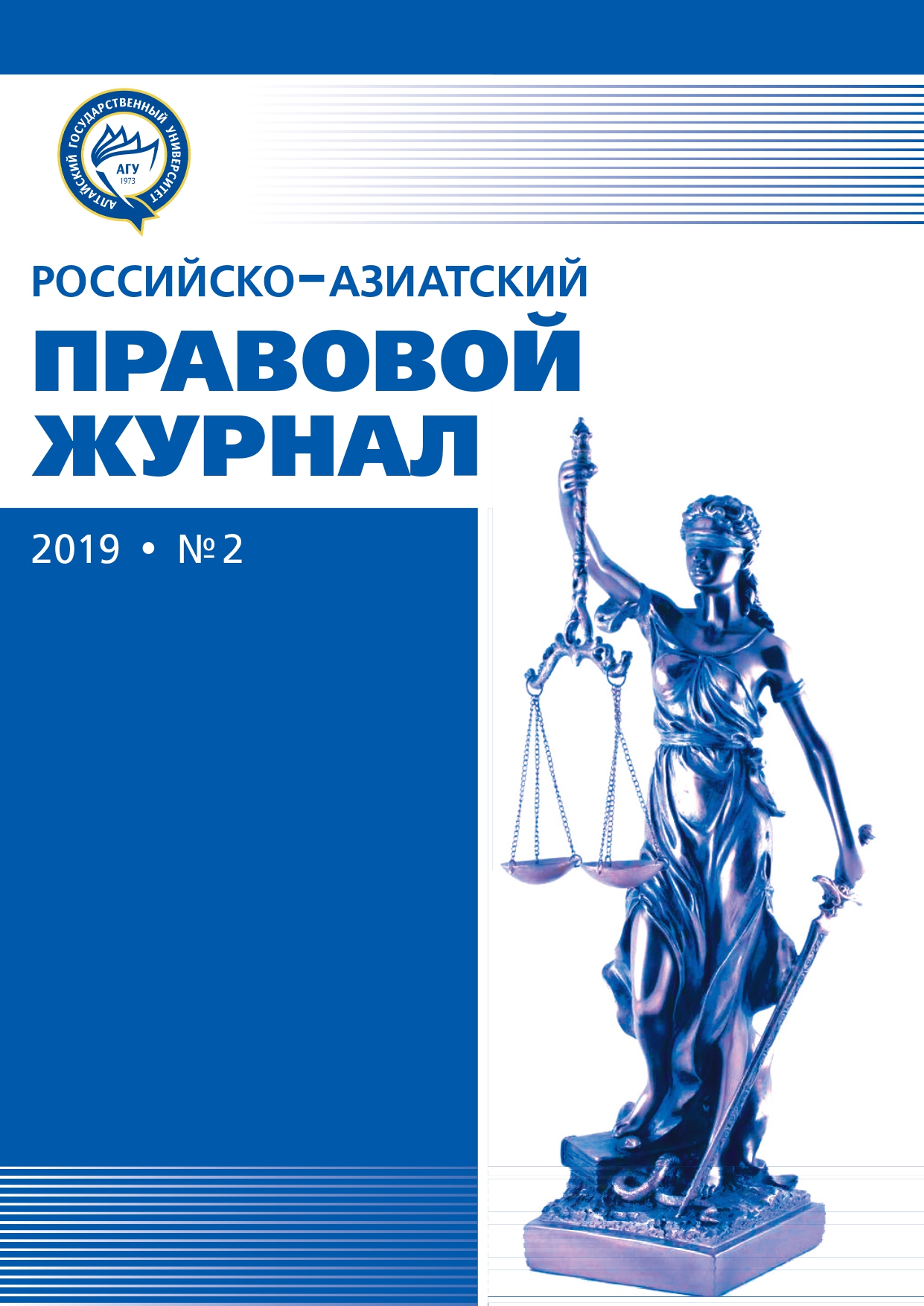PROBLEMS OF EXECUTION OF CRIMINAL PENALTIES NOT RELATED TO DEPRIVATION OF LIBERTY APPLIED TO MINORS
УДК 343.8 ББК 67.408
Abstract
The main focus of the fight against crime is to ensure the execution of criminal punishment. For a longtime, the legislator has been developing a mechanism for the most effective use of punishment against minors,which has helped to achieve the goals of criminal punishment, impossible without its real execution, as wellas to reduce the level of juvenile crime.The article deals with the types of coercive measures of educational influence; some types of penaltiesunrelated to imprisonment applied to minors, the institution of probation and the problems associated withtheir execution. An attempt is made to propose solutions to these problems.
Downloads
References
Беляева Л.И. Организационно-правовые проблемы предупреждения преступности несовершеннолетних. М., 2012.
Волошин В. Проблемы назначения несовершеннолетним осужденным исправительных работ и лишения свободы // Уголовное право. 2008. №1.
Изоляция в центре временного содержания для несовершеннолетних правонарушителей. URL: http://isfic.info.
Отчет о проделанной работе УМВД по Алтайскому краю за 2017 год // URL: https://22.мвд.рф.
Сутурин М.А. Обязательные работы в отношении несовершеннолетних. Томск, 2011. 24 с.
Третьяк М.И., Колячкина И.В. Некоторые вопросы применения условного осуждения несовершеннолетних. URL: https://cyberleninka.ru.
Russian-Asian Law Journal is a golden publisher, as we allow self-archiving, but most importantly we are fully transparent about your rights.
Authors may present and discuss their findings ahead of publication: at scientific conferences, on preprint servers, in public databases, and in blogs, wikis, tweets, and other informal communication channels.
Russian-Asian Law Journal allows authors to deposit manuscripts (currently under review or those for intended submission) in non-commercial, pre-print servers such as ArXiv.
Authors who publish with this journal agree to the following terms:
- Authors retain copyright and grant the journal right of first publication with the work simultaneously licensed under a Creative Commons Attribution License that allows others to share the work with an acknowledgement of the work's authorship and initial publication in this journal.
- Authors are able to enter into separate, additional contractual arrangements for the non-exclusive distribution of the journal's published version of the work (e.g., post it to an institutional repository or publish it in a book), with an acknowledgement of its initial publication in this journal.
- Authors are permitted and encouraged to post their work online (e.g., in institutional repositories or on their website) prior to and during the submission process, as it can lead to productive exchanges, as well as earlier and greater citation of published work (See The Effect of Open Access).








